If you recently got a lovebird (of the genus Agapornis) or are considering adding one to your family, you might be wondering about the lifespan of a lovebird. How long do lovebirds live? How long will you be able to enjoy the company of your feathered friend?
Many factors influence lovebird lifespan, so let’s dive into how long they live and what you can do to make sure yours will be around for years to come.
This post contains affiliate links. If you make a purchase, a small percentage will go directly to Psittacology at no additional cost to you. Thank you for supporting Psittacology!
How long do lovebirds live in the wild?
Let’s start off with wild lovebird lifespan. Unlike budgies, for example, the lifespan of wild species of lovebirds has not been studied that thoroughly.
What we do know, obviously, is that the life of a wild lovebird is much tougher than that of a captive one. The African habitats they inhabit can be harsh and many baby lovebirds probably don’t even make it all the way to adulthood.
All in all, we can probably expect a wild lovebird to live up to around 5 years if it’s relatively unlucky and up to 10-12 years if conditions are good. An abundance of food, lack of natural predators and access to a source of water are all crucial in determining the lifespan of a lovebird in the wild.
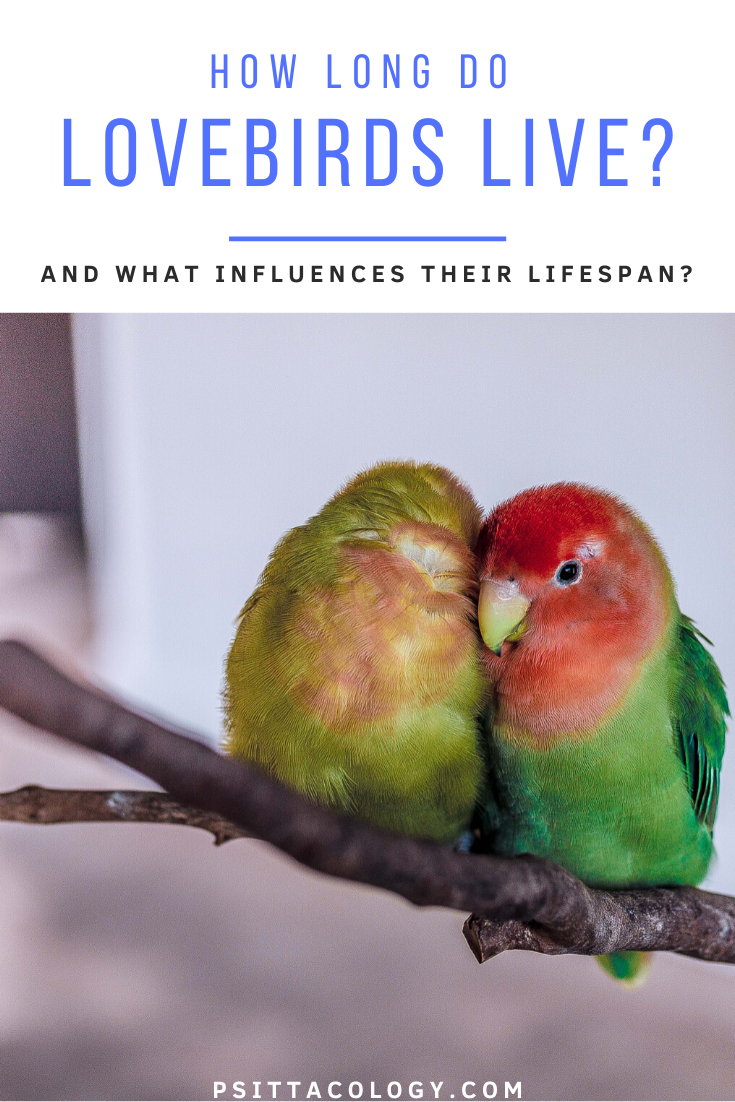
Lifespan of a lovebird in captivity
Now, before we go into lovebird lifespan in captivity, keep in mind that a pet bird is entirely dependent on YOU. No matter how long a bird is expected to live, its actual lifespan depends on your care. If you want your lovebird to live a long and happy life, researching their care is crucial.
With that disclaimer over with, we are happy to report that lovebird lifespan in captivity is quite a bit longer than wild lovebirds are expected to live. With proper care and a dose of luck, your lovebird might be able to make it to up to 20 years!
In rare cases, ages of up to 25 or more have even been reported. In unluckier circumstances, these birds still make it to 10 years in most cases.
Reminder! Keep in mind that there is not one single species of lovebird. The genus Agapornis contains multiple species that are kept in captivity and their lifespan might vary. For the most common lovebird species (like Agapornis personatus, Agapornis fischeri and Agapornis roseicollis) the above applies, though.
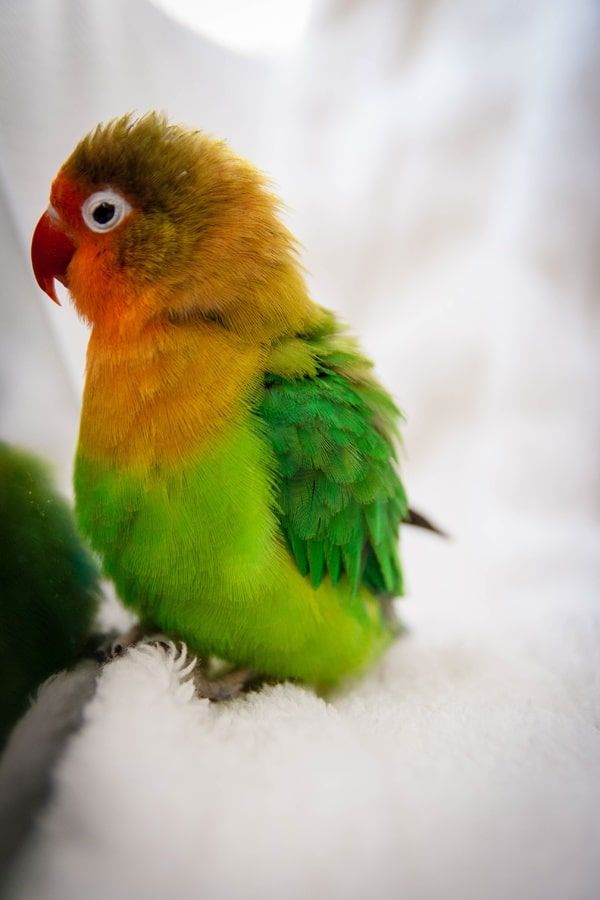
Lifespan of a lovebird: what influences it?
Let’s move on to the most important part of this article! As mentioned above we can go on all day about a lovebird’s potential lifespan, but in the end, it’s all in your own hands.
Below, we’ll go over some of the most important lovebird care aspects that greatly influence their potential to live a long and happy life. We’ll divide these factors into diet and general care.
Diet
As with any pet (and any human, too), a proper diet is absolutely crucial in keeping your lovebird healthy. And unfortunately, as with many other pet species, knowledge about a suitable lovebird diet is sometimes lacking among owners.
It’s very easy to just grab a bag of seed mix and have a bowl of that sitting out for your lovebirds all day, and that’s what domestic parrot diet is often portrayed as. In reality, it’s a bit more complicated: seeds alone are much too fatty and don’t contain all the nutrients a lovebird needs.
A domestic lovebird also definitely doesn’t get enough exercise to warrant 24/7 access to food, unless it’s something very low-calorie like lettuce.
Variety is the keyword here. Although a high-quality seed mix can make up part of your lovebird’s diet, it shouldn’t be the only food it has access to. In the wild, a lovebird would eat any seeds it could find but also consume many other things, like berries, sprouts and fruits.
You should aim to mimic this broad diet for your captive lovebird by offering a wide variety of foods:
- A base of high-quality parrot pellets
- Fresh veggies like leafy greens but also peppers, carrots, zucchini and more
- Fresh fruits in moderation, such as berries, apple, pear, mango and more
- Freshly sprouted seeds, which are very high in nutrition
- Regular seeds
- Cooked grains like rice and pasta (unsalted)
- Mineral block is generally a good addition
- Additional options (a little bit of boiled egg, cat grass to nibble on, wild herbs and weeds)
Important! Don’t forget to also always have clean water available to your lovebird, preferably multiple sources. Change the water daily or any time you find food or poop bits in there!
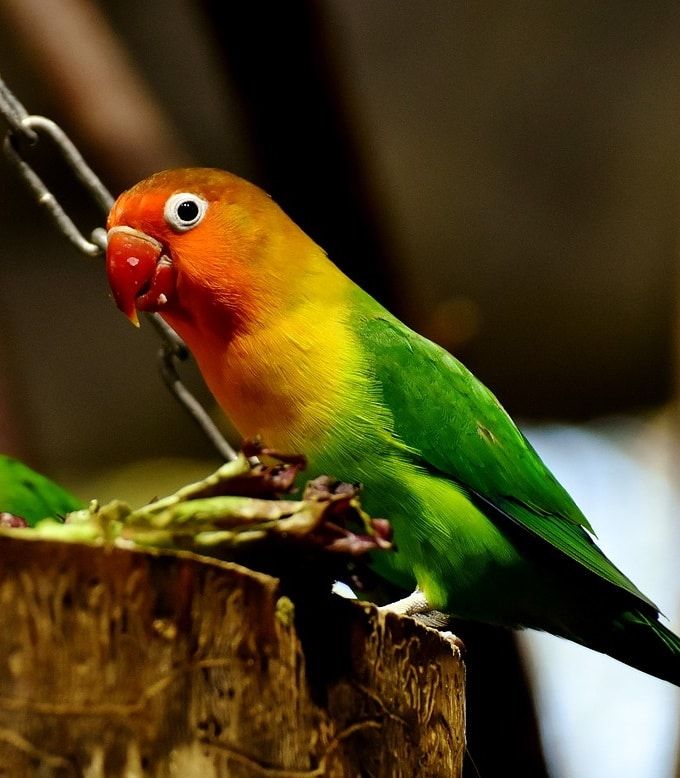
Care
Apart from a proper, varied diet, there are some other factors that play a big role in lovebird lifespan.
We won’t turn this into a full lovebird care guide, but be sure to keep the following in mind.
- Cage size & flying time: A lovebird in a small cage that doesn’t get daily free flying time can develop obesity-like health issues. Just like us humans, your lovebird needs exercise to stay healthy.
Be sure to also provide plenty of parrot toys to help keep your lovebird busy while inside its cage.
- Safety first: Always have it in mind. Use safe toys, parrot-proof the room before letting your lovebird fly free and don’t let other pets interact with your bird.
- Air quality: All birds have extremely sensitive respiratory systems. The air should be all-natural to keep their lungs healthy. No cigarette smoke, perfumes, teflon pan fumes, candles or similar items in the bird room please!
- Stress: A constantly stressed lovebird can pass away prematurely. So no spooking or rough handling your lovebird and be sure it gets plenty of social contact.
If you can’t provide this (if you work regular hours, for example), get your bird a friend. It won’t die without a mate like some believe, but another lovebird companion is greatly appreciated.
- Emergencies: Make sure you know how to spot a health emergency in your lovebird. You should be able to recognize symptoms of disease and know where to find a vet who sees birds.
Also try having a little “first aid kit” ready: corn starch stops bleeding, tweezers can remove splinters, a sensitive scale to see if the bird has lost weight, etc.
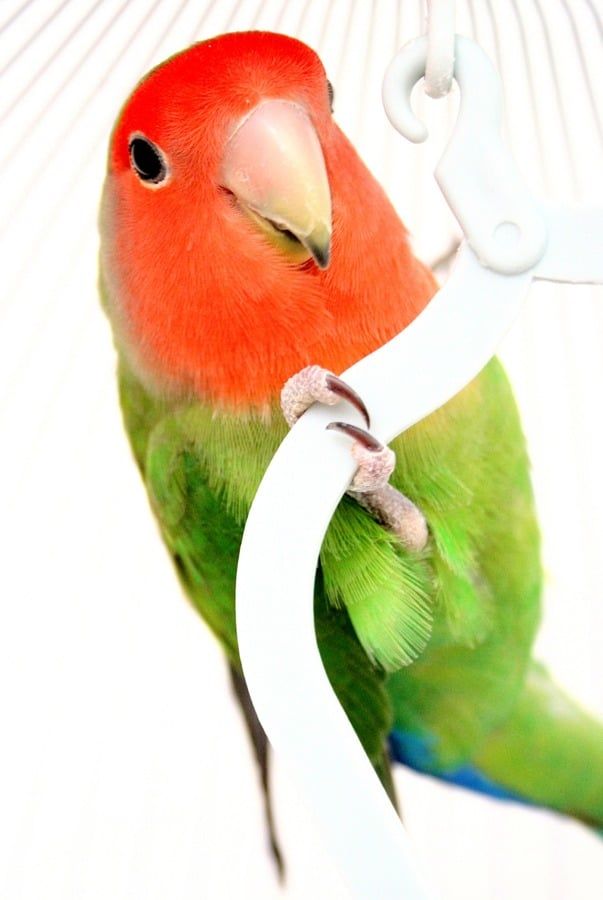
How old is my lovebird?
If you’ve had your lovebird for a while and want to know how much longer you’ll be able to enjoy its company, you might be wondering how old your bird is. After all, unless you buy from a breeder you might not know how old the bird is by the time it ends up in your home.
Unfortunately, as with many other domestic parrot species, figuring out a lovebird’s age is next to impossible once it’s all grown up. You might luck out if it has a leg band that you can use to determine when it hatched but other than that, it’s all guesswork. Really all you can do is figure out whether your lovebird is a juvenile or not.
Juvenile lovebirds can be recognized from the black splotches they’ll generally sport on their beak. Additionally, their colors will be less pronounced until they go through their first molt at around ~4 months.
A peach-faced lovebird (Agapornis roseicollis), for example, won’t show the typically intensely colored face when it’s still young. It might also have some incomplete plumage until it goes through that important first molt.
If you have any more questions about the lifespan of a lovebird or want to share your own experiences with one of the many beautiful lovebird species out there, don’t hesitate to leave a comment below!

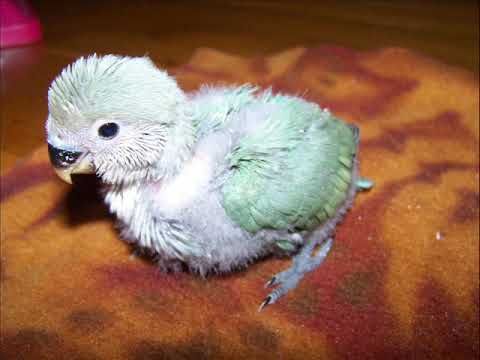
1 thought on “Lifespan Of A Lovebird: How Long Do Lovebirds Live?”